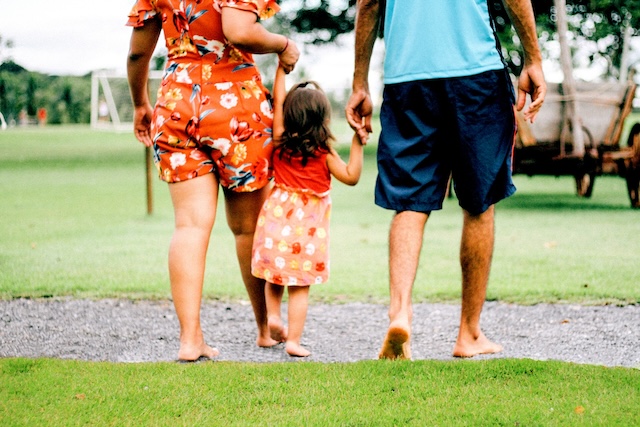Building an open adoption relationship

Every open adoption relationship is unique, and a child-centered open adoption is built by birth parents and adoptive parents intentionally acknowledging and valuing the importance they all hold in their child’s life.
Adopted children need unconditional love, acceptance, and support from all their parents. Here are some things birth parents and adoptive parents can do to create a healthy foundation for their child.
Be authentic. Meaningful relationships can form when all parties let each other see who they truly are! Birth parents and adoptive parents each have a unique role in their child’s life, and each has much to offer their child and one another.
Acknowledge shared traits. When adoptive and birth parents acknowledge the characteristics they see in their child that they share with their birth or adoptive parents, it can help a child feel loved and seen for all parts of who they are. This can include traits, talents, mannerisms, physical characteristics, etc.
Acknowledge loss. Loss is a part of adoption, and it’s okay to name that with each other.
Show appreciation. Encourage a sense of teamwork. An adopted child will benefit from seeing their loved ones affirmed by one another. Just as a parent can love more than one child, an adopted child can love all their parents.
Practice unconditional positive regard by believing that everyone is doing their best and brings value into the open adoption relationship. Give others the benefit of the doubt even when things get hard.
Recognize holidays. Remember Mother’s Day, Father’s Day, the child’s birthday, and other meaningful days as important times to acknowledge and honor one another.
Testimonials—building a relationship
Learn more—building a relationship
Learn more about open adoption
In an open adoption, the adopted child and their adoptive family maintain an ongoing connection to the child’s biological family.
Open adoption benefits both biological and adoptive families and, most importantly, the adopted child.
Closed adoption, which is largely a thing of the past, was motivated by fear, shame and secrecy.
FAQs building a relationship
Frequently asked questions
- Can both parents be involved in the process?
Yes, we welcome the cooperation and participation of the non-pregnant parent. Ideally, both parents help choose the adoptive family, meet them, and develop ongoing relationships. Each birth parent can create a separate Open Adoption Agreement with the adoptive family. Adoptees benefit from knowing all parts of who they are.
- How is an adoptive family chosen?
Adoptive families are chosen by expectant parents, who consider families that are open to their specific situation. When choosing an adoptive family, expectant parents consider what is important to them as they review prospective adoptive family profiles. These profiles include an introductory letter, photo book with autobiographical information, video, and homestudy.
- Is open adoption confusing for the child?
No, it is actually less confusing for a child to have access to information about all parts of who they are and be able to build relationships with their biological and adoptive families. Knowing about their adoption and the people who are a part of it can help adoptees to process and better understand their adoption story.
- What do adoptees call their birth parents in an open adoption?
Adoptees and their biological families choose ways to refer to one another that work for them, and every situation is different. In some cases, an adopted child may refer to a biological parent using the word mother or father (or a variant such as mom, mama, etc.), while in other cases they may choose to refer to them using their first names. During adoption planning, biological and adoptive families often talk about how they will refer to one another, and this can set a foundation for how the child will refer to people. This can also change over time.
- Will the adoptive family stay in touch with me?
Families who adopt through OA&FS have affirmed their commitment to openness in adoption and have engaged in a thorough learning and reflection process with our program about why they value an ongoing connection to their child’s birth family. In Oregon and Washington and many other states, a legally enforceable open adoption contact agreement can be created as part of an adoption plan. This agreement outlines a minimum level of contact everyone agrees to until the child turns 18. Ongoing contact is discussed during the adoption planning process, and all parties share their vision and hopes for their open adoption relationship. OA&FS provides ongoing support to everyone involved post-placement, including if challenges arise around contact/communication between birth family and the adoptive family.